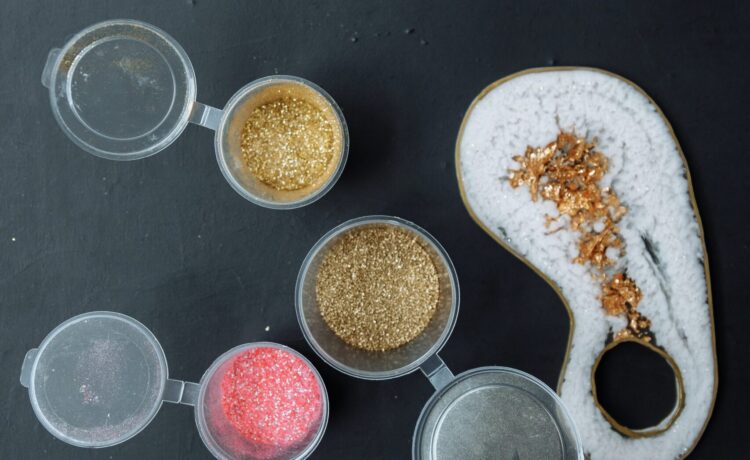Unleash your creativity with the incredible versatility of silicone rubber for resin art moulding! Whether you’re a seasoned artist or just starting on your artistic journey, exploring the possibilities of this remarkable material will take your resin art to new heights. From its unique properties to the wide array of benefits it offers, silicone rubber is a game-changer in the world of art. So grab your imagination and let’s dive into the fascinating world of using silicone rubber for resin art moulding!
What is Silicone Rubber and its Properties
When it comes to resin art moulding, silicone rubber is a material that deserves your attention. But what exactly is silicone rubber and why is it so popular among artists? Simply put, silicone rubber is a synthetic compound made from silicon, oxygen, carbon, and hydrogen. This combination results in a flexible yet durable material that has numerous applications.
One of the standout properties of silicone rubber is its ability to withstand extreme temperatures. Whether you’re pouring hot resin or using heat guns for techniques like creating cells or manipulating colors, silicone rubber can handle the heat without losing its shape or integrity.
Another remarkable property of silicone rubber is its non-stick nature. Unlike other materials such as plastic or metal molds that require release agents, resin easily releases from cured silicone molds without any additional aid. This means less hassle and more time focusing on your creative process.
Silicone rubber also boasts excellent flexibility and elasticity. It can stretch and bend without breaking, allowing for intricate designs and detailed molds with ease. Its inherent flexibility also makes demolding easier as you can gently flex the mold to release your masterpiece.
Additionally, Silicone rubbers are available in various hardness levels measured on the Shore A durometer scale which allows artists to choose the appropriate firmness for their specific project needs.
The unique properties of silicone rubber make it an ideal choice for resin art moulding. Its temperature resistance ensures stability during curing while its non-stick nature simplifies demolding. The flexibility and versatility offer endless possibilities for artistic expression in your resin creations!
The Benefits of Using Silicone Rubber for Resin Art Moulding
Silicone rubber is a versatile material that offers numerous benefits for resin art moulding. Its unique properties make it an ideal choice for artists looking to create stunning and intricate resin pieces.
One of the key benefits of using silicone for moulds rubber is its flexibility. It easily conforms to complex shapes and contours, allowing artists to create detailed molds with ease. Whether you’re working on a small pendant or a large sculpture, silicone rubber can adapt to any size or shape.
In addition, silicone rubber has excellent release properties. Once the resin has cured, it can be effortlessly removed from the mold without causing any damage. This saves time and ensures that your artwork remains intact during the demolding process.
Another advantage of silicone rubber is its durability. It can withstand high temperatures without deforming or losing its shape, making it suitable for casting projects involving heat-resistant materials like epoxy resins.
Furthermore, silicone rubber is non-toxic and safe to use in art applications. It does not emit harmful fumes or chemicals when exposed to heat or other conditions commonly associated with resin casting. This makes it a reliable choice for artists concerned about their health and safety.
Silicone rubber molds have a long lifespan if properly cared for. With proper maintenance and storage, they can be reused multiple times without compromising their quality or performance.
The benefits of using silicone rubber for resin art moulding are undeniable – flexibility, easy release properties, durability,
non-toxicity ,and longevity all contribute to creating beautiful and professional-looking resin artworks
Types of Silicone Rubber for Resin Art Moulding
When it comes to resin art moulding, choosing the right type of silicone rubber is crucial. There are different types available in the market, each with its own unique properties and applications. Let’s explore some of these options!
1. Tin-cured Silicone Rubber:
This type of silicone rubber is commonly used for resin art moulding due to its excellent tear strength and flexibility. It offers good resistance to chemicals and high temperatures, making it suitable for various casting projects.
2. Platinum-cured Silicone Rubber:
Platinum-cured silicone rubber is known for its exceptional quality and durability. It produces high-quality molds with superior detail reproduction. This type of silicone rubber also has a longer working time, allowing artists to take their time during the casting process.
3. Addition Cure Silicone Rubber:
Addition cure silicone rubber is often preferred by professionals as it provides excellent dimensional stability and low shrinkage rates. It can withstand extreme conditions, including high temperatures and UV radiation.
4. Brushable Liquid Silicone Rubber:
As the name suggests, this type of silicone rubber comes in liquid form that can be easily brushed onto surfaces or objects. It offers excellent flowability and self-leveling properties, ensuring smooth mold surfaces without air bubbles or trapped debris.
5.Casting Grade Silicone Rubber
Casting grade silicone rubbers are specifically formulated for large-scale resin art projects where thick layers or multiple pours are required.
With these different types of silicone rubbers available on the market today, artists have more options than ever before when it comes to creating stunning resin art pieces! Experimentation with different types can lead to new techniques and designs that will truly make your artwork stand out! So go ahead, dive into the world of silicones and unleash your creativity!
Step-by-Step Guide on Using Silicone Rubber for Resin Art Moulding
Step 1: Prepare your workspace. Make sure you have a clean, well-ventilated area to work in. Lay down some newspaper or plastic sheeting to protect your surfaces from any potential spills.
Step 2: Choose the right silicone rubber mold for your project. There are different types of silicone rubber molds available, so choose one that suits the shape and size of your desired resin art piece.
Step 3: Mix the silicone rubber according to the manufacturer’s instructions. This usually involves combining a base and catalyst in specific ratios and thoroughly mixing them together.
Step 4: Pour the mixed silicone rubber into your chosen mold. Make sure to fill it completely but avoid overfilling as this may cause excess material to seep out.
Step 5: Allow the silicone rubber to cure completely. Follow the recommended curing time provided by the manufacturer, which can range from a few hours to overnight depending on the type of silicone used.
Step 6: Once cured, carefully remove the resin art piece from the mold. Gently flex or twist the mold if necessary to release any trapped air bubbles or vacuum pockets that may have formed during casting.
Step 7: Clean and store your silicone rubber mold properly for future use. Rinse it with warm water and mild soap, then dry thoroughly before storing it away in a cool, dry place.
Using silicone rubber for resin art moulding offers endless possibilities for creating unique and intricate pieces. With this step-by-step guide, you’ll be able to explore its versatility and unleash your creativity! Happy crafting!
Alternative Materials for Resin Art Moulding
While silicone rubber is undoubtedly a versatile and popular choice for resin art moulding, it’s worth exploring some alternative materials that can also yield stunning results. These options may offer different properties and effects, providing artists with even more creative possibilities.
1. Polyurethane Rubber: Polyurethane rubber is another flexible material that can be used as a mould for resin art. It offers good tear resistance and durability, making it suitable for intricate designs or large-scale projects. However, polyurethane rubber can have a shorter lifespan compared to silicone rubber.
2. Latex: Latex is a natural material derived from the sap of the rubber tree. It has excellent flexibility and elasticity, making it ideal for creating detailed moulds with intricate patterns or textures. However, latex may not be resistant to certain chemicals present in resins, so caution should be exercised when choosing compatible products.
3. Alginate: Alginate is a seaweed-based material commonly used in dental impressions due to its ability to capture fine details accurately. While alginate molds are typically one-time use only and not as durable as other options mentioned above, they are perfect for capturing delicate objects or body parts temporarily.
4. 3D Printed Moulds: With advancements in technology, artists now have the option of using 3D printed moulds made from various materials like PLA (polylactic acid) or PETG (polyethylene terephthalate glycol). These moulds allow artists to create intricate designs with precision while offering versatility in size and shape.
As an artist experimenting with resin art moulding techniques, don’t shy away from exploring these alternative materials alongside traditional silicone rubber options! Each material brings its own unique qualities that can enhance your artistic vision.
Remember to consider factors such as desired level of detail, durability requirements of the project at hand, compatibility with resins being used, and personal preferences when selecting the most suitable material for your resin art moulding.





